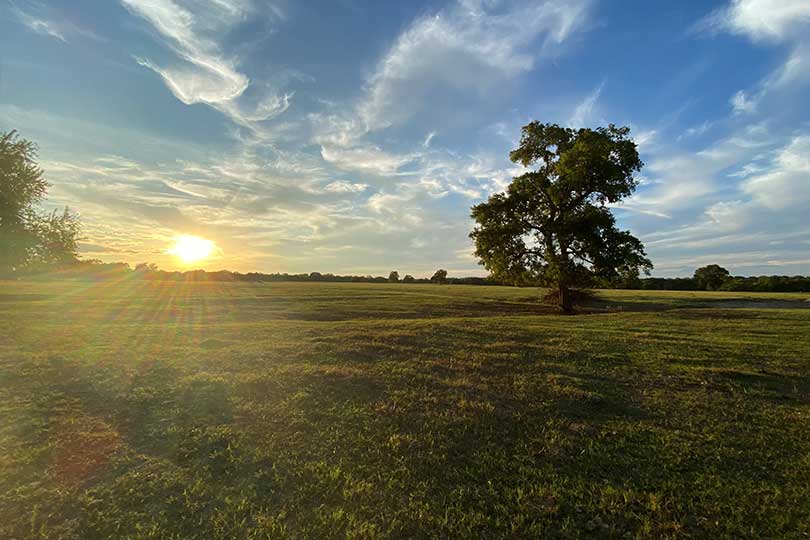By Emmy Powell
Communications Specialist
This year has been nowhere close to normal. Throughout the spring and summer, Texas experienced drought. Some areas remain in drought, and others have seen relief.
“This has been a unique year,” Vanessa Corriher-Olson, Texas A&M AgriLife Extension forage extension specialist in Overton, said. “There are counties in Central Texas where half of the county has had moisture and the other half has not. So, rainfall has been fairly sporadic, and most of the rainfall that we’ve received has probably been toward the end of August, beginning of September.”
Corriher-Olson put emphasis on the varying conditions in Texas.
“In some parts of the state, we have had some improved growth on some of our forages in those areas where there has been some moisture,” she said. “There are still parts of our state that are in extreme drought conditions and still have reduced forage production, and those areas and folks are having to depend very heavily on hay or other feed sources to maintain any of their livestock.”
Farmers and ranchers face important decisions concerning planting and options for winter forages.
“How producers are responding is very dependent on where they are in the state,” Corriher-Olson said. “I do recommend, if it is economical and if they can, to use winter forages as part of their forage system. A lot of folks have been relying heavily on hay. And if they do not plant winter forages or they’re not able to plant winter forages, they’ll continue to have to rely on hay, as well as other supplementation, to maintain any numbers of livestock.”
Another challenge that affected forage production is the cost of fertilizer.
“High fertilizer prices have had a huge impact on our forage production,” she said. “Some have not applied fertilizer which, of course, reduces forage production and forage persistence. And you top that with drought conditions, both have had a huge impact on our overall forage production for 2022.”
She does not expect to see much relief in costs.
“I do not anticipate that we will see much relief in regard to fertilizer prices this winter,” she said. “We do need to assume and prepare that they could likely still be this high next spring as we start moving into our hay, pasture season for 2023.”
As cooler temperatures set in, farmers and ranchers are encouraged to be on the lookout for armyworms.
“I recommend producers start scouting for armyworms,” she said. “We’ll tend to see armyworms if we’ve been dry, then we get some moisture. There can be some concerns that are highly dependent, oftentimes, on weather conditions.”
Other concerns that may arise, depending on weather, include nitrate toxicity, prussic acid or hydrogen cyanide poisoning. These concerns vary on the type of forage and weather conditions, but producers are encouraged to be aware and to evaluate hay.

